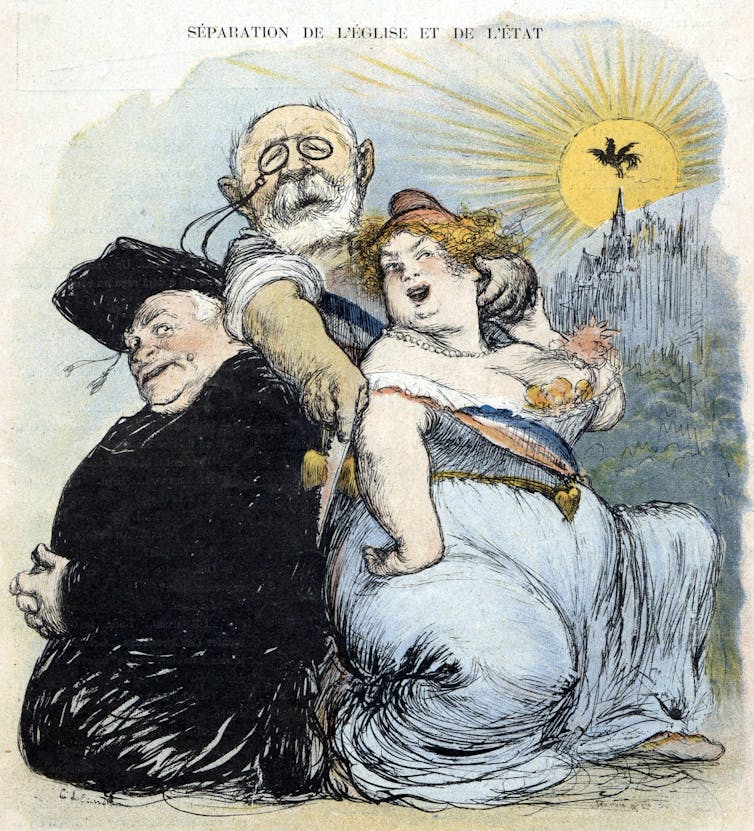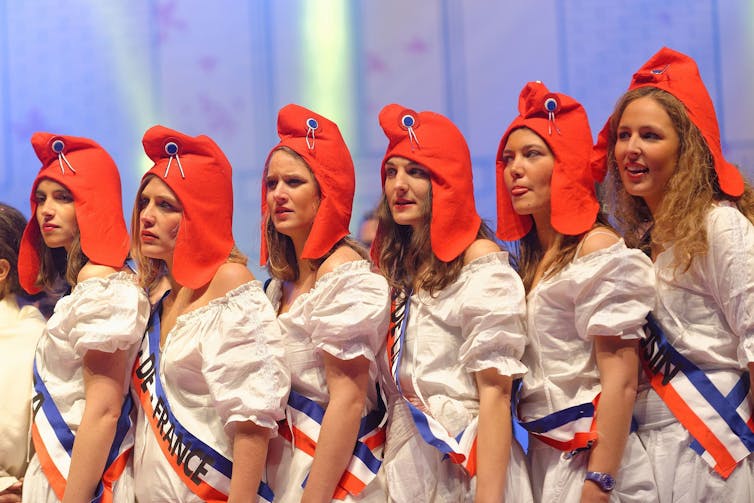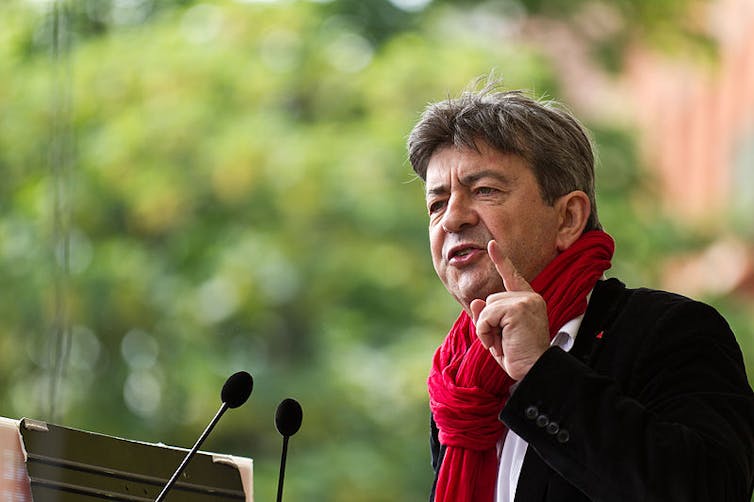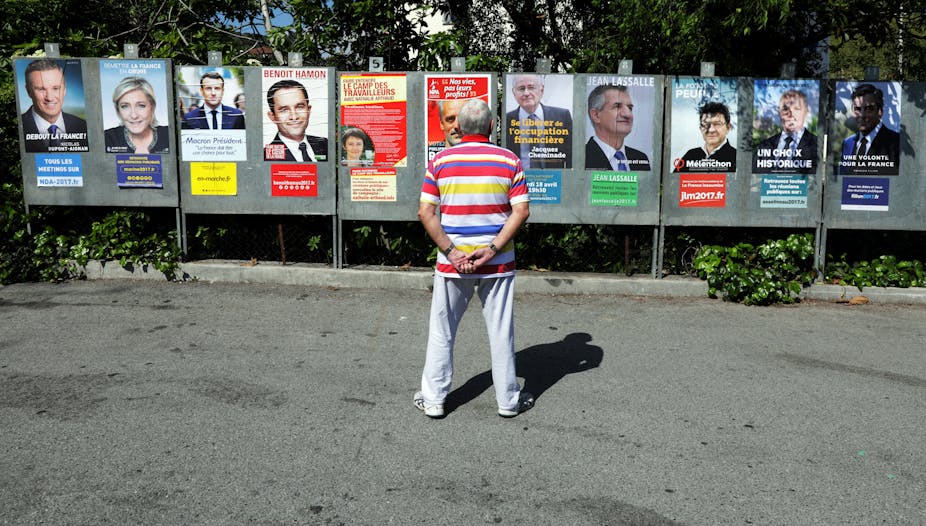France is heading to the polls on April 23 for the first round of its presidential election. This election holds particular importance for the European nation, which finds itself at a crossroads, with its whole political system in question.
From abroad, the situation seems puzzling to many commentators. According to the newspaper China Daily, for instance, the election is particularly “messy” (because it’s confusing).
While five candidates appear to have emerged as favourites from the 11 who qualified to stand for election, their platforms, the values they promote and their political affiliations (except for a few) are not very obvious.
Indeed, France is witnessing a “political blur”, in which the clash between left- and right-wing ideologies seems long gone. Just ahead of the first round of the polls, 42% of French people have declared that they still haven’t made up their minds.
The second round of voting will take place on May 7.
Labels that date to the King
Left and right are old labels, dating back to the French Revolution. In 1789, the National Constitutive Assembly met to decide whether, under France’s new political regime, the king should have veto power. If so, it queried, should this right should be absolute or simply suspensive, for a period of time.
When voting, supporters of the absolute veto sat on the president’s right, the noble side. According to Christian tradition, it is an honour to be seated at the right side of God, or to the right of the head of the family at dinner. Those who wanted a highly restricted veto were seated on the left.
Thus, the layout of the room took on political significance: to the right, supporters of a monarchy that sought to preserve many of the king’s powers; to the left, those who wished to reduce them.
In the 19th century, this vocabulary was increasingly used to describe the political leanings of members of the French parliament.
The great advantage of these labels is their simplicity: they reduce complex political ideas to a simple dichotomy. It also makes it easy for people to identify the “right” side, to which they belong, and the “wrong” side, which they condemn.

From the 19th century onward, sub-categories quickly developed, aimed at placing every politician on a kind of spectrum from left to right. In this way, political parties can be said to be more or less left wing, or more or less right wing, in relation to one another.
Soon, people were talking about “right-wing coalitions”, “left-wing blocks”, “centre-right”, “centre-left”, “far-right” and “far-left”, and the like.
‘The clash of two Frances’
At the beginning of the 19th century, the left-right divide essentially distinguished supporters of an absolute monarchy from those of a constitutional monarchy.
It would later set monarchists against republicans, then conservative republicans against the modernists who implemented the major social reforms of the Third Republic that included the freedom of the press, freedom of association, the right to belong to a trade-union and divorce, among other things.
At the turn of the 20th century, the left-right debate essentially covered the divide between the defenders of Catholicism and advocates for the separation of church and state. This shift, which took place in 1905, would often be referred to as “the clash of two Frances” – Catholic and anticlerical.

From the 1930s onward, the economic divide came to the fore, with the left advocating for socialism and the right calling for economic liberalisation.
By the 1970s, the liberalisation of social mores had become a key issue, with continuing debates on abortion, divorce, homosexuality, marriage equality and euthanasia. The same is true of immigration and openness to the world, which stood in opposition to cultural, social and economical protectionism.
Parties with many faces
In France, the divide grew in several political realms. In his famous work, The Right Wing in France, political historian René Rémond defined three separate right-wing currents: the legitimist and counter-revolutionary right, the liberal right, and the Bonapartist right, authoritarian and conservative.

Whether or not these divisions still exist today is open to debate. What is certain is that there is still a significant difference between the conservative, more authoritarian right that favours an economy in which the state plays a regulatory and protective role, and the liberal right that favours deregulation, less restrictive labour laws and more entrepreneurship.
Today’s French Republican party represents the latter position well, from former prime minister Jean-Pierre Raffarin to former president Nicolas Sarkozy.
The Bonapartist right – often identified to Gaullism after the former French president Charles de Gaulle (1959-1969) – can now be partially identified with Marine Le Pen’s National Front, which prizes a strong leader, order and patriotism.
In truth, for each overarching area of political debate, there are at least two right wings and two left wings. Concerning family values and gay marriage, for instance, a minority on the right are open to increased tolerance, while a minority on the left are rather reluctant.
The same can be said of immigration. Not everyone on the right is convinced by restrictive immigration policies, while open immigration policies are far from universally approved of on the left.
Don’t forget the centre
Centrist positions are often difficult to pin down. Those who self-identify as centrists sometimes occupy the middle ground on certain main political issues but stand to the left on one issue and to the right on another.
Early 20th century radicals, often characterised as defenders of secularism and basic freedoms, were also economically liberal, and generally considered as having “their heart on the left but their wallet on the right”. Centrists from the Christian Democratic tradition, who favoured social protections, dialogue between workers and management, and oppose unchecked economic liberalism, were also conservative on family issues.

While it is possible to identify broad schools of thought that can be classified as right, left or centre over the long term, policies vary greatly over time. We cannot ascribe unchanging, universal content to these categories.
These days, we cannot even say that the right is for the status quo or that the left wants change, as has sometimes been claimed. When it comes to the welfare state, people on the right clamour for reform, whereas those on the left want to defend social protections.
Still, in each era, centre, left and right have served as signposts, allowing us to classify political parties, politicians and the ideas they promote.
The 2017 presidential election deepens the divide
In the right- and left-wing “primaries” that took place a few weeks ago, French parties selected candidates who clearly illustrated their ideological differences.
But this process also revealed more left- or right-leaning positions within each camp, as demonstrated by the second-round primary between François Fillon and Alain Juppé, on the right, and, on the left, between Benoît Hamon and Manuel Valls.
It’s likely that the majority of those who watched the first televised debate on March 20, prior to the first round of voting, would have similarly placed candidates on the spectrum of left to right.
Jean-Luc Mélenchon, the candidate for “La France insoumise” (the rebellious France), embodies a type of social protest. He refuses any alliance with the current left-wing government and takes more radical stands on institutions, Europe and economics than the Social Democrat Benoît Hamon.

Emmanuel Macron, the former economy minister responsible for a large share of President François Hollande’s economic policy, is running on a centrist platform. A strong proponent of liberal economic policies, he also supports a certain social safety net and the integration of immigrants while opposing discrimination against minorities. He is trying to attract moderates from the left and the right.
In other words, Macron seeks to build an electorate comprised of Socialists who find Benoît Hamon too lefty and of Republicans or centrists who find François Fillon too far to the right. That marks a clear difference between this mainstream right and the populist, protectionist, anti-European extreme right represented by Marine Le Pen’s National Front.
Not all the same
So why is the belief that there is no real difference between left and right so commonly held?
This view can be traced back to opinion surveys from the 1980s. A growing number of people now claim that the concepts of left and right have lost all meaning. Yet these same people, in the same surveys, happily self-identify on a continuum of left to right and define their political identity in these dichotomous terms.
They also respond differently to a variety of political issues, as compared to their self-established position on that scale.
This apparent paradox can be explained. Many people who personally feel more left wing or right wing according to their convictions also believe that governments tend to implement similar policies when in power. They therefore expect clear political platforms that can be summarised as left wing or right wing but are ultimately disappointed by the outcomes.
As a result, candidates make promises to attract votes without taking into account how difficult they may be to implement. But selling right- or left-wing ideas during an election campaign also serves to make people dream – capturing hearts and minds at the expense of considering the realities that elected governments must face.
Translated from the French by Alice Heathwood for Fast for Word.


